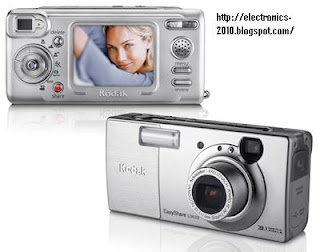The LCD is currently the display of choice in small devices
and is also popular in large-screen TVs. Regular LEDs often
form the digits on digital clocks and other electronic
devices. OLEDs offer many advantages over both LCDs and LEDs:
* The plastic, organic layers of an OLED are thinner,
lighter and more flexible than the crystalline layers in an
LED or LCD.
* Because the light-emitting layers of an OLED are
lighter, the substrate of an OLED can be flexible instead of
rigid. OLED substrates can be plastic rather than the glass
used for LEDs and LCDs.
* OLEDs are brighter than LEDs. Because the organic
layers of an OLED are much thinner than the corresponding
inorganic crystal layers of an LED, the conductive and
emissive layers of an OLED can be multi-layered. Also, LEDs
and LCDs require glass for support, and glass absorbs some
light. OLEDs do not require glass.
* OLEDs do not require backlighting like LCDs. LCDs work
by selectively blocking areas of the backlight to make the
images that you see, while OLEDs generate light themselves.
Because OLEDs do not require backlighting, they consume much
less power than LCDs (most of the LCD power goes to the
backlighting). This is especially important for
battery-operated devices such as cell phones.
* OLEDs are easier to produce and can be made to larger
sizes. Because OLEDs are essentially plastics, they can be
made into large, thin sheets. It is much more difficult to
grow and lay down so many liquid crystals.
* OLEDs have large fields of view, about 170 degrees.
Because LCDs work by blocking light, they have an inherent
viewing obstacle from certain angles. OLEDs produce their own
light, so they have a much wider viewing range.

Problems with OLED
OLED seems to be the perfect technology for all types of
displays, but it also has some problems:
* Lifetime - While red and green OLED films have longer
lifetimes (46,000 to 230,000 hours), blue organics currently
have much shorter lifetimes (up to around 14,000 hours).
* Manufacturing - Manufacturing processes are expensive
right now.
* Water - Water can easily damage OLEDs.

Current and Future OLED Applications
Currently, OLEDs are used in small-screen devices such as
cell phones, PDAs and digital cameras. In September 2004,
Sony Corporation announced that it was beginning mass
production of OLED screens for its CLIE PEG-VZ90 model of
personal-entertainment handhelds.
Kodak was the first to release a digital camera with an OLED
display in March 2003, the EasyShare LS633.
Several companies have already built prototype computer
monitors and large-screen TVs that use OLED technology. In
May 2005, Samsung Electronics announced that it had developed
a prototype 40-inch, OLED-based, ultra-slim TV, the first of
its size. And in October 2007, Sony announced that it would
be the first to market with an OLED television. The XEL-1
will be available in December 2007 for customers in Japan. It
lists for 200,000 Yen -- or about $1,700 U.S.
Research and development in the field of OLEDs is proceeding
rapidly and may lead to future applications in heads-up
displays, automotive dashboards, billboard-type displays,
home and office lighting and flexible displays. Because OLEDs
refresh faster than LCDs -- almost 1,000 times faster --
a device with an OLED display could change information almost
in real time. Video images could be much more realistic and
constantly updated. The newspaper of the future might be
an OLED display that refreshes with breaking news -- and like
a regular newspaper, you could fold it up when you're done
reading it and stick it in your backpack or briefcase.

Aucun commentaire:
Enregistrer un commentaire